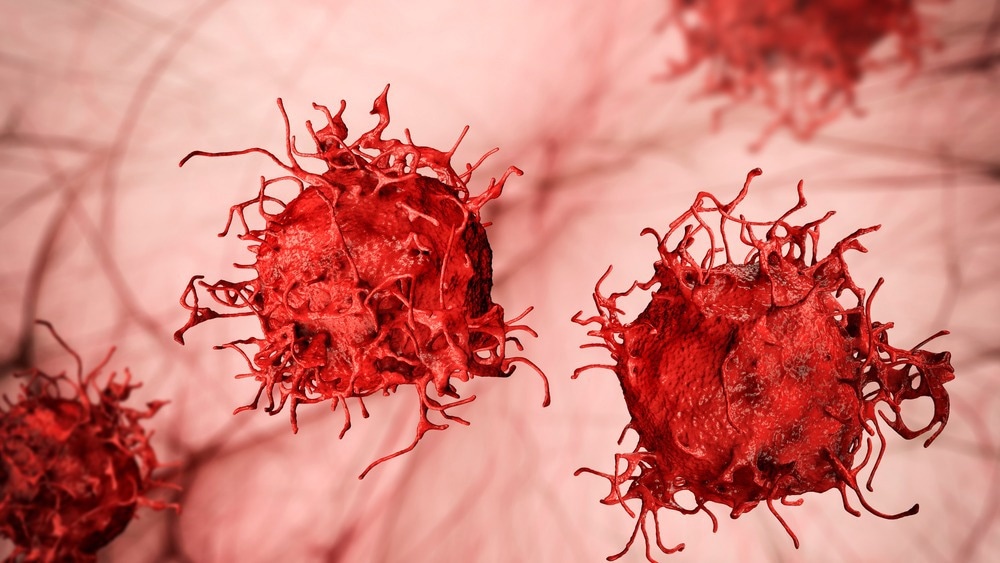A recent study from Cornell University offers a new perspective on how the chemotherapy agent etoposide delays and kills vital enzymes that support the growth of cancer cells.

Image Credit: Kateryna Kon/Shutterstock.com
The research, conducted in Michelle Wang’s lab in the College of Arts and Sciences, will expand the understanding of a variety of cancer inhibitors. Michelle Wang is the James Gilbert White Distinguished Professor of the Physical Sciences and a Howard Hughes Medical Institute Investigator in the College of Arts and Sciences
The group’s methods will also make it possible to construct sensitive screening tools for locating pharmacological mechanisms that might enhance patient care.
The study was released by the team on January 30th, 2023 in Nature Chemical Biology. Research specialist Tung Le and postdoctoral researcher Meiling Wu are the co-lead authors.
Etoposide has been used as a reliable chemotherapy for treating various tumors for 40 years. Etoposide works by inhibiting Type IIA eukaryotic topoisomerases, also referred to as topo IIs, which are necessary for cancer cells to replicate.
The lengthy, entangled, DNA helical coil strands are at the core of the replication process. These strands must be untangled, rotated, and replicated by motor proteins for cancer to spread. Topo IIs are ideal for the task.
By cutting the supercoiled DNA, swiftly inserting another DNA strand in the center of it, and then sewing the cut DNA back together, they pull the DNA loose. The body performs all of that without harming the fragile genetic structure of the DNA, which is a remarkable feat of biology that occurs about 300 billion times every day.
The primary benefit of etoposide is that it can stop a DNA double-strand break from propagating before anything is reconnected. But it is still unclear how precisely etoposide interacts with DNA structure.
The primary benefit of etoposide is that it can stop a DNA double-strand break from propagating before anything is reconnected. But it is still unclear how precisely etoposide interacts with DNA structure. To understand how those enzymes work, we want to mimic what might be happening in the cell. Motor proteins pull on the DNA or apply a force on the DNA. So, we said, OK, we can apply a force and see what happens.”
Michelle Wang, James Gilbert White Distinguished Professor, Physical Sciences, Department of Physics, Cornell University
Three topo IIs—yeast topoisomerase II, human topoisomerase II alpha, and human topoisomerase II beta—provided by collaborators led by professor James Berger of Johns Hopkins University were employed by Wang’s group to investigate the effects of etoposide on each.
Wang added, “DNA topology, conceptually and in terms of torsional mechanical properties, is really hard for people to grasp. There were very few ways to study it. But we happen to have just the right tools. And the reason we have the right tools is because for the last 20 years, we have been working on developing them. These tools and this problem just happened to converge at the right time.”
The first step was to stretch DNA into different configurations using optical tweezers to show how etoposide compacts, releases, and breaks it and produces DNA loops. Everyone was taken aback by this loop-trapping behavior since it disclosed an etoposide effect that had not previously been understood.
It suggests that etoposide could encourage topo II to drastically change DNA topology and structure in vivo.
The scientists next simulated the motor removal of a bound protein by using optical tweezers to unzip double-stranded DNA into two single strands for high-resolution characterization of protein interactions with the DNA. According to the research, etoposide could be able to turn topo II into a potent inhibitor of DNA-processing machinery.
With their third method, which is a modified form of magnetic tweezers, scientists twisted DNA while attaching a bound topo II, then observed as the topo II slowly relaxed the DNA. Etoposide was introduced, and they discovered that it staggered this pattern by producing pauses that correspond to the entrapment of supercoiled loops.
The researchers now have a quantitative framework for describing the activities of additional topoisomerase inhibitors by accounting for the many ways etoposide boosts these actions and inhibits topo II activity.
Wang further added, “I think this gives us a set of tools that would allow us to study many different kinds of topoisomerases and other kinds of drugs in a very comprehensive way. Everything we do mimics what happens in vivo. We just do it in a mechanically controlled fashion. This is why it is so powerful.”
Source:
Journal reference:
Le, T. T., et al. (2023). Etoposide promotes DNA loop trapping and barrier formation by topoisomerase II. Nature Chemical Biology. doi.org/10.1038/s41589-022-01235-9